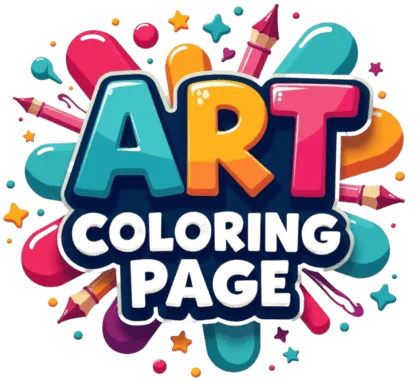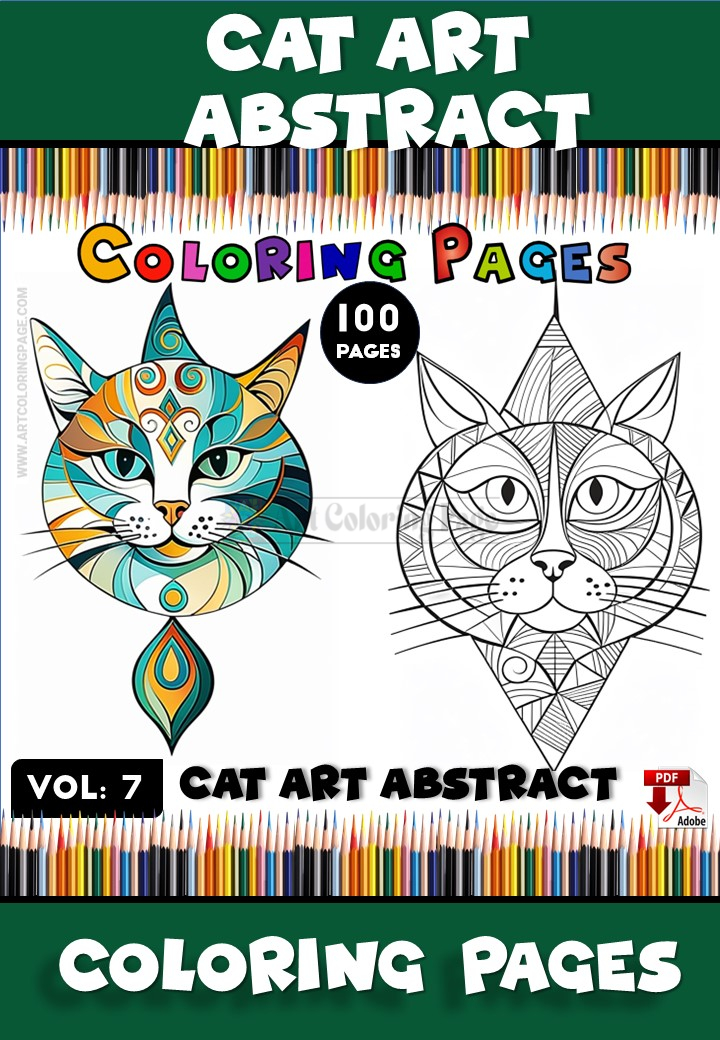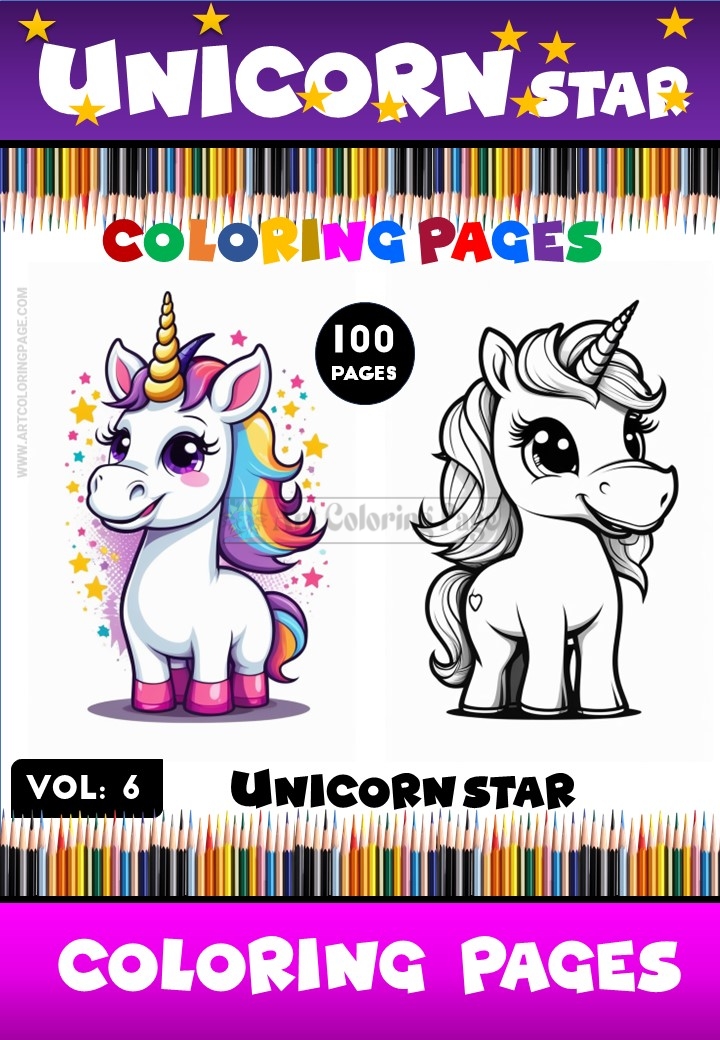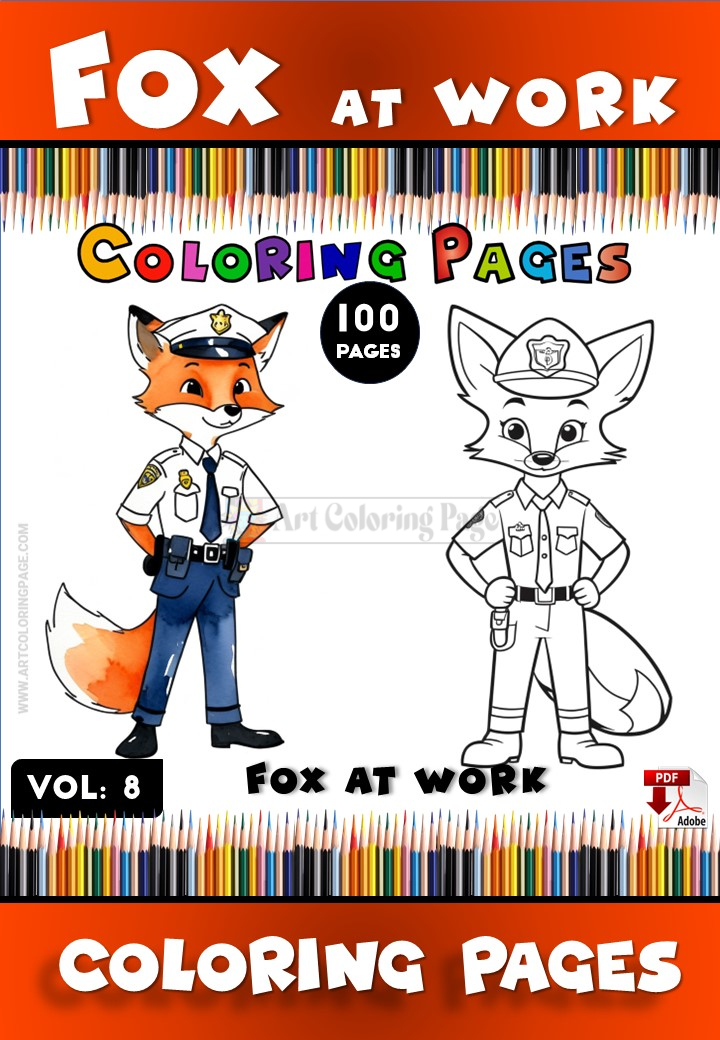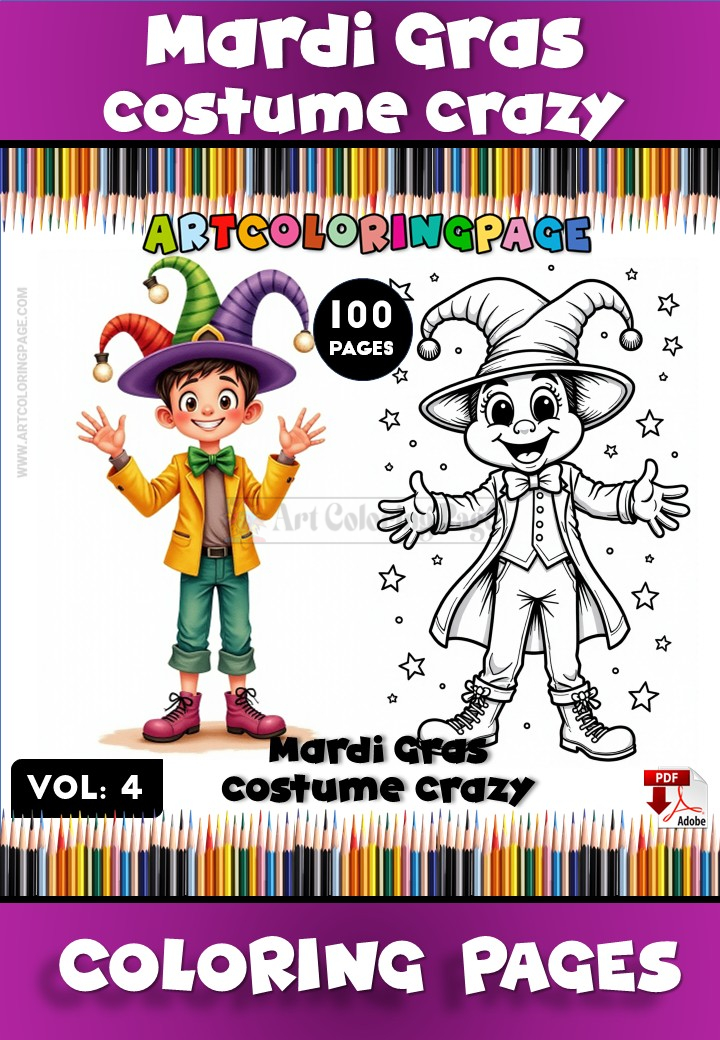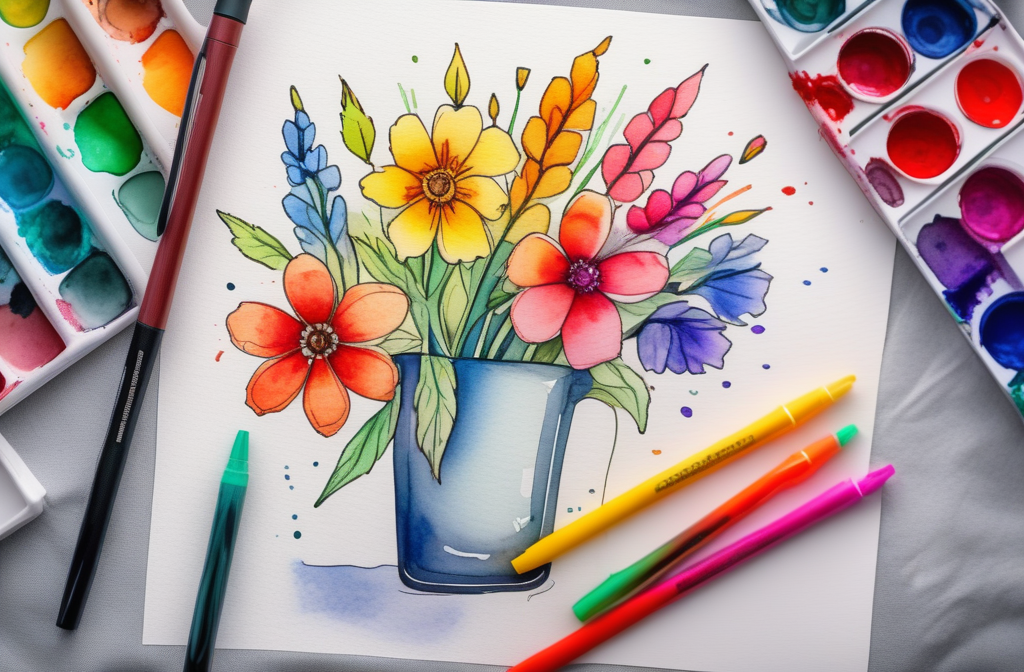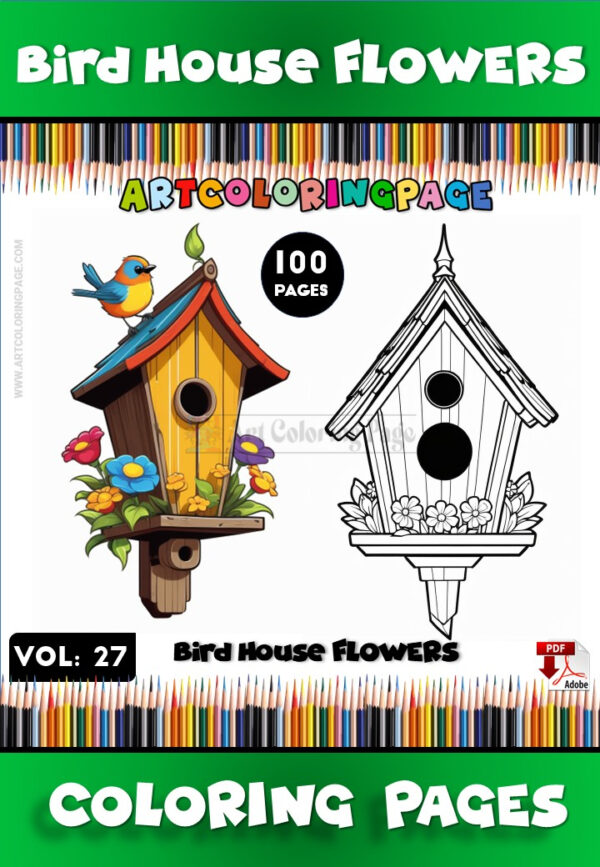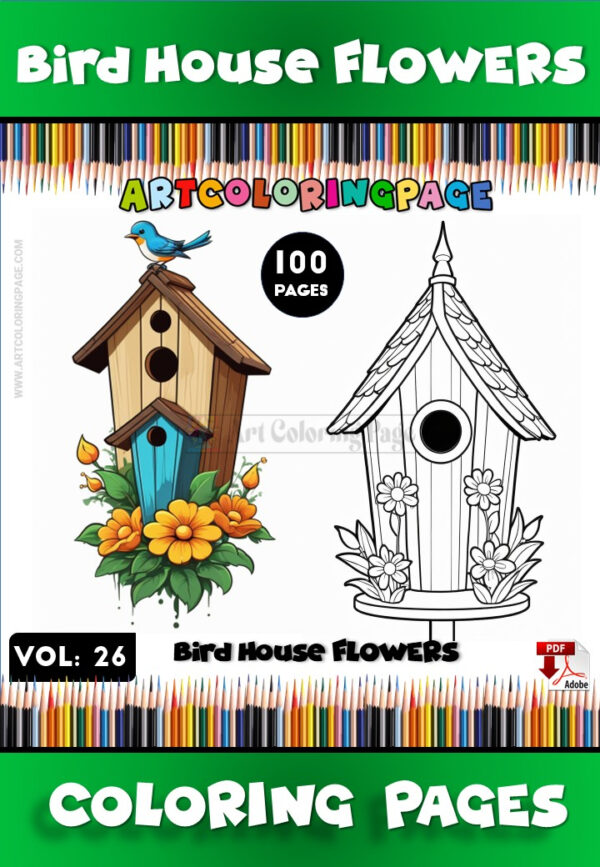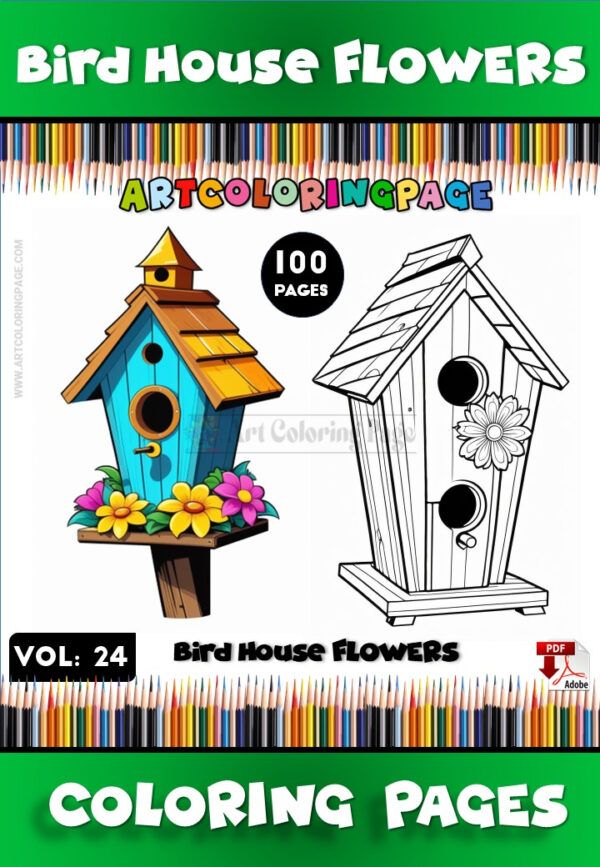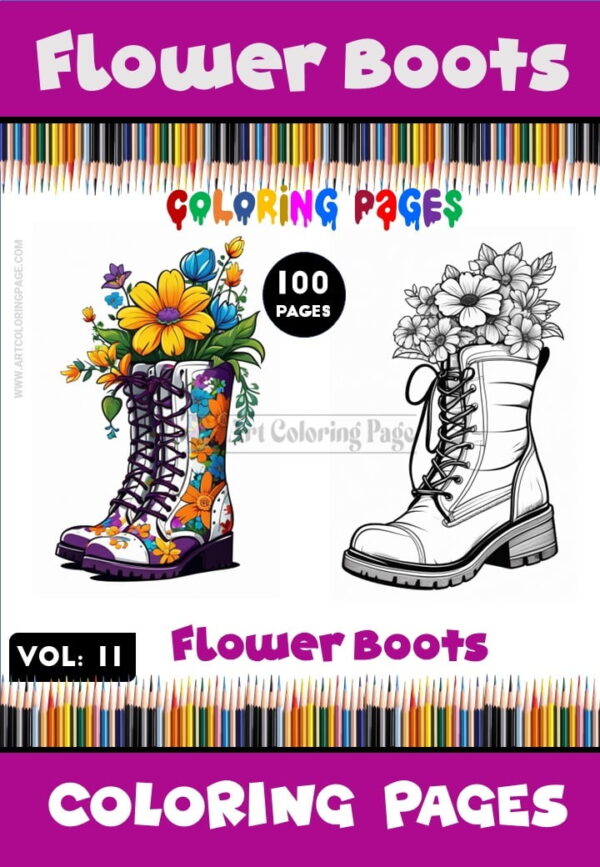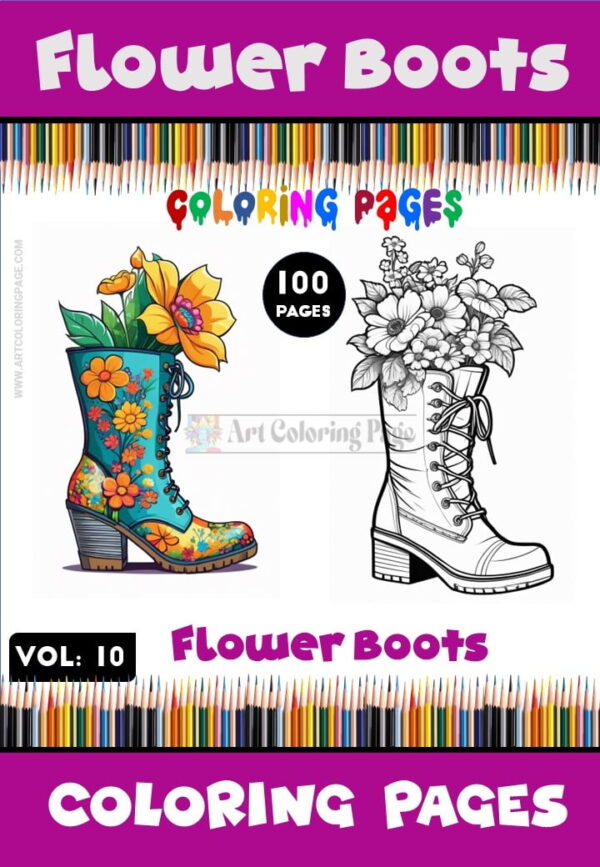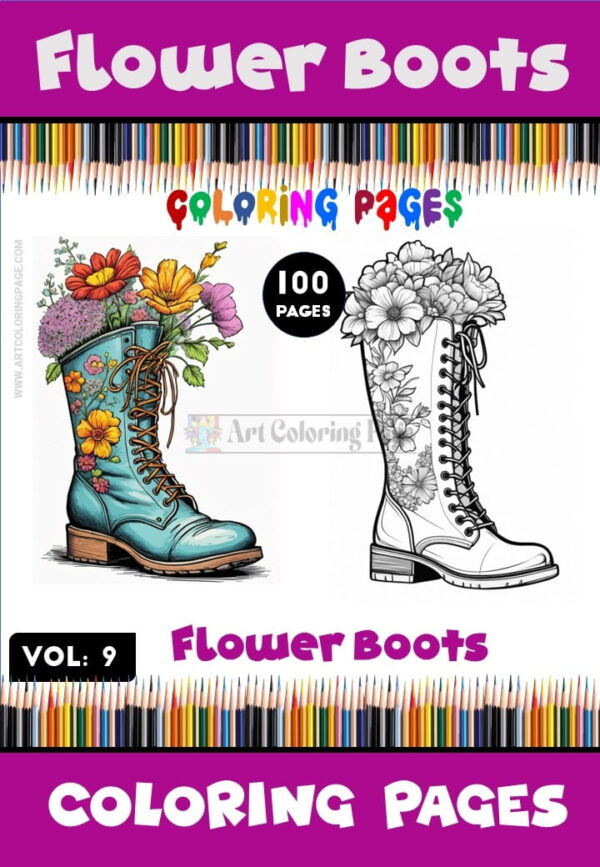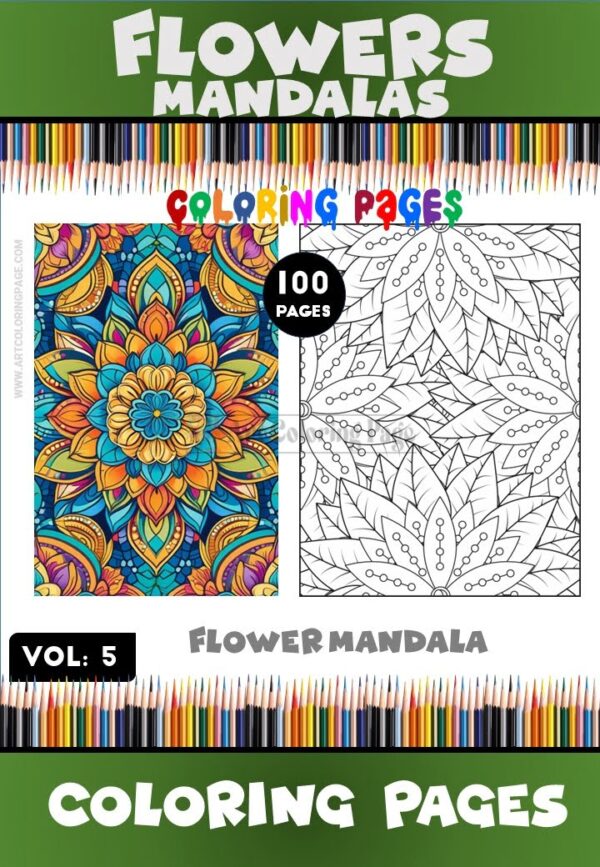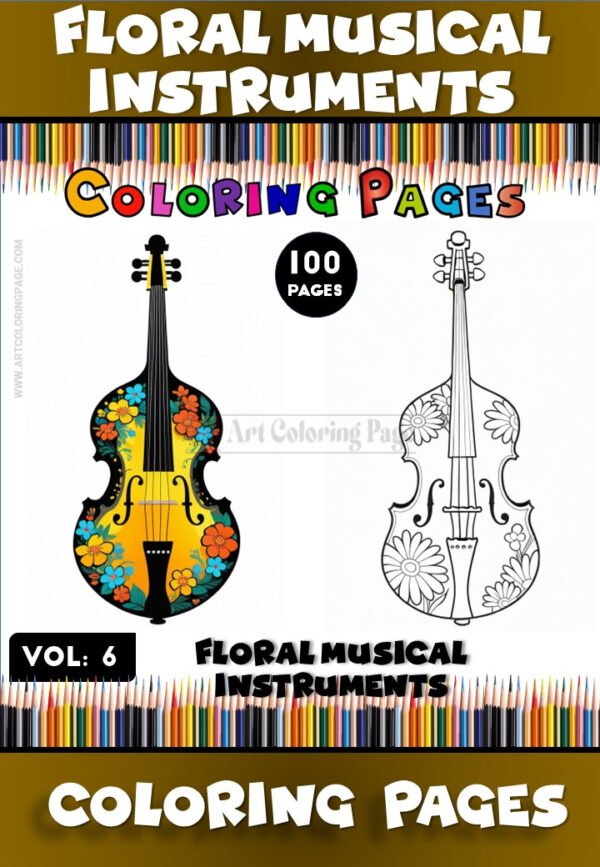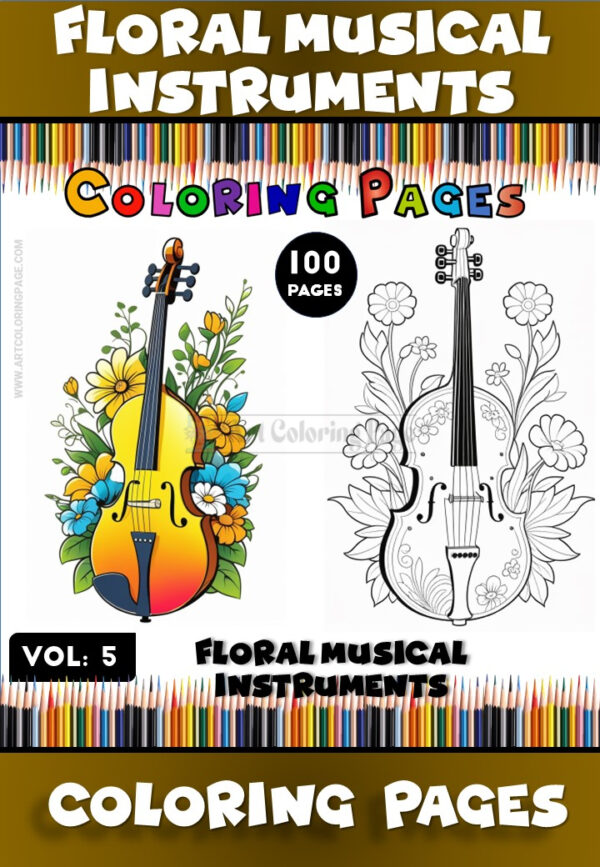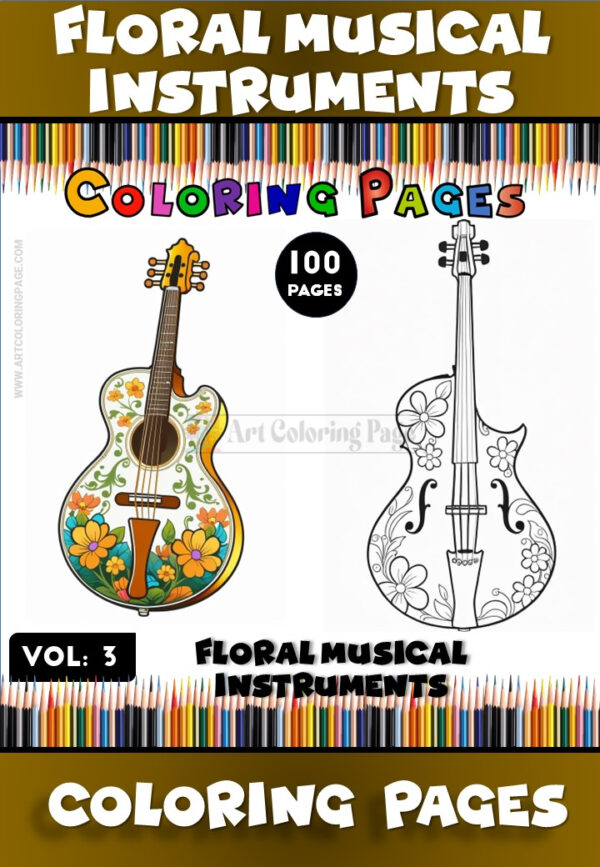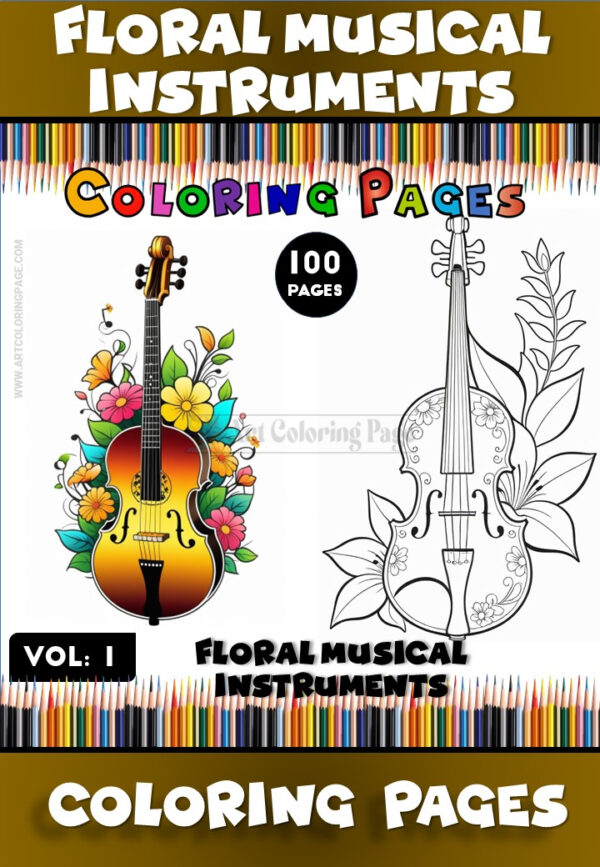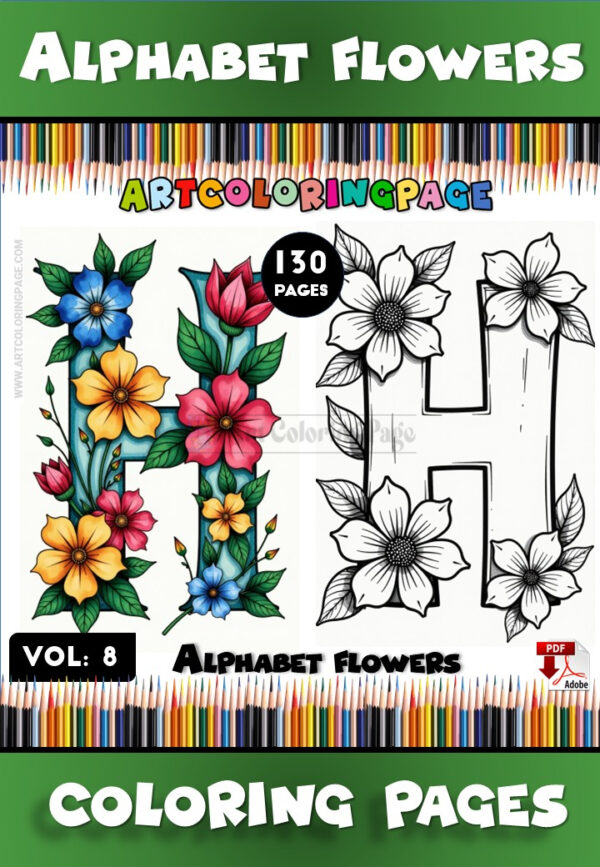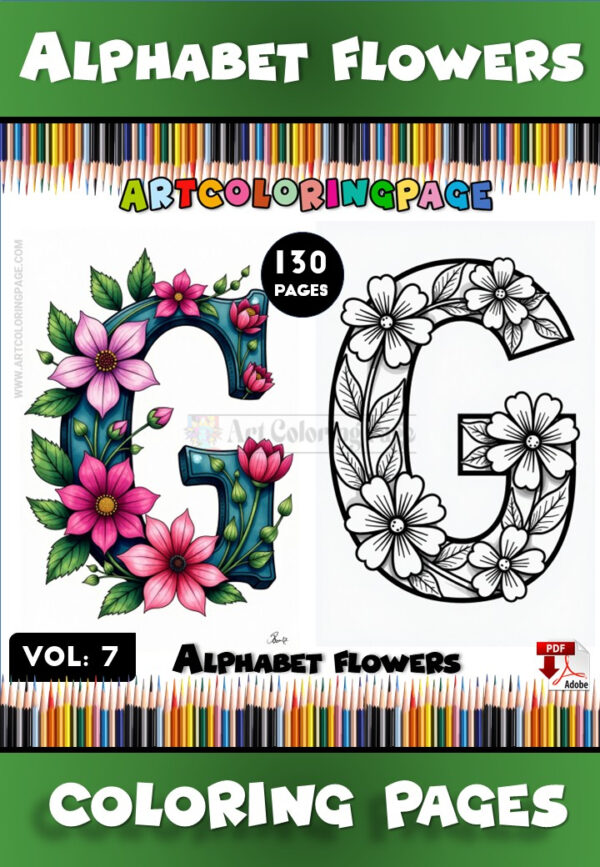Blogs coloring page
Flower Coloring Pages for Adults: Bloom into Calm & Creativity
The Enduring Charm of flower coloring pages for adults
Amidst the burgeoning landscape of adult coloring, a theme consistently stands out for its timeless appeal and profound ability to soothe the soul: flowers. The intricate beauty, delicate forms, and vibrant hues of botanical life translate perfectly onto the page, offering a uniquely calming and engaging experience for grown-up colorists. Flower coloring pages for adults have blossomed into a hugely popular niche within the broader coloring phenomenon, attracting individuals seeking not just a creative outlet, but also a connection to nature and a pathway to mindfulness. Why this enduring fascination with florals? Flowers are universal symbols of beauty, growth, renewal, and emotion. Their presence, whether in a garden, a vase, or rendered in ink on a coloring page, has an innate ability to uplift spirits and calm minds. They represent a gentle yet powerful aspect of the natural world that resonates deeply within us, offering a welcome contrast to the often harsh and demanding realities of modern existence.
The rise of floral themes in coloring for grown-ups taps into this deep-seated connection. It provides an accessible way to engage with the beauty of nature, even when confined indoors or living in urban environments. More than just pretty pictures, these pages often feature sophisticated designs, ranging from scientifically accurate botanical illustrations to stylized patterns and whimsical fantasy gardens, demanding focus and inviting creative interpretation. This article will explore the enchanting world of flower coloring pages for adults in depth. We will delve into the reasons behind their universal appeal, uncover the significant therapeutic benefits associated with coloring botanical designs, journey through the diverse artistic styles available, and provide practical techniques to help you bring these blooms to life with color. Furthermore, we will guide you to the absolute best resource for finding exquisite floral pages to begin your own journey of calm and creativity. Prepare to immerse yourself in a garden of paper and ink, and discover how coloring flowers can help your own well-being blossom.
Why Flowers? The Deep-Rooted Connection to Botanical Beauty
The human fascination with flowers is ancient and universal, woven into the fabric of cultures, art, and traditions across the globe. From the lotus flower symbolizing purity and enlightenment in Eastern religions to the rose representing love and passion in Western culture, flowers carry profound symbolic weight. They mark significant life events – births, celebrations, condolences – acting as silent communicators of complex emotions. This deep-rooted connection stems from multiple factors. Aesthetically, flowers are marvels of natural design, showcasing incredible diversity in form, color, symmetry, and fragrance. Their often vibrant colors and pleasing shapes naturally attract the human eye, evoking feelings of joy, wonder, and appreciation for beauty. Think of the intricate spiral of a rose, the delicate trumpet of a lily, or the cheerful face of a sunflower – these forms are inherently captivating.
Psychologically, flowers often trigger positive emotional responses. Studies in environmental psychology suggest that exposure to nature, including flowers and plants, can reduce stress, improve mood, and enhance cognitive function. This innate positive response, sometimes linked to the concept of biophilia (our inherent tendency to connect with nature), means that simply looking at or interacting with floral imagery can have a calming and uplifting effect. Flowers signal periods of growth, abundance, and renewal in nature, tapping into primal associations with sustenance and well-being. When we engage with flower coloring pages for adults, we are not just coloring shapes; we are tapping into this rich tapestry of cultural symbolism, aesthetic appreciation, and innate psychological connection to the botanical world. It’s an activity that resonates on multiple levels, explaining why floral themes remain perpetually popular and deeply satisfying for so many.
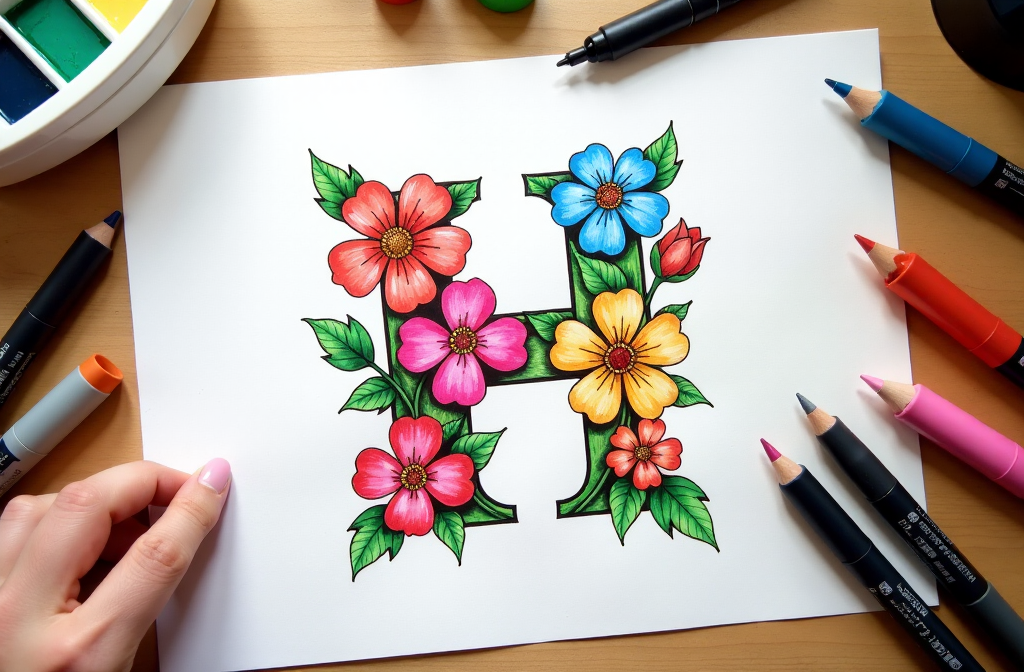
Beyond Child’s Play: The Sophistication of Floral Coloring for Grown-Ups
While flowers are a common theme in children’s coloring books, the flower coloring pages for adults available today represent a significant leap in complexity, artistic merit, and intended purpose. Children’s floral pages typically feature simple outlines, large spaces, and often cartoonish representations designed primarily for basic color recognition and motor skill development. The focus is on easy engagement and playful learning. In contrast, floral coloring for grown-ups embraces sophistication and detail, catering to a mature audience seeking relaxation, mindfulness, and a genuine artistic challenge.
The line art in adult floral pages is often incredibly intricate. You’ll find delicate veins on leaves, subtle textures on petals, complex arrangements in bouquets or wreaths, and detailed backgrounds featuring accompanying foliage or insects. Designs range from hyperrealistic botanical illustrations demanding careful observation and precise color application to highly stylized interpretations inspired by Art Nouveau, folk art, or abstract principles. Many pages incorporate complex patterns, mandalas woven with floral motifs, or entire garden scenes requiring thoughtful composition and color harmony. This level of detail is not merely decorative; it’s functional. It necessitates focus and concentration, drawing the colorist into the present moment and facilitating the mindfulness benefits associated with adult coloring. The sophistication extends to the subject matter itself – featuring exotic blooms, specific species rendered accurately, or imaginative fantasy flowers. It’s an elevated experience, treating floral art with the respect it deserves and offering adults a challenging yet rewarding way to engage with botanical beauty through the meditative act of coloring.
Cultivating Well-being: The Therapeutic Benefits of Floral Coloring
Engaging with flower coloring pages for adults is far more than just a pleasant way to pass the time; it’s an activity rich with therapeutic potential, offering tangible benefits for mental, emotional, and even cognitive well-being. The combination of the inherently calming subject matter – flowers and nature – with the focused, meditative act of coloring creates a powerful synergy that promotes relaxation and reduces stress. In a world where anxiety and burnout are increasingly common, finding accessible, enjoyable tools for self-care is paramount, and floral coloring fits this bill perfectly.
The benefits stem from several interconnected factors. The focus required diverts the mind from anxious thoughts, the repetitive motions soothe the nervous system, the connection with nature imagery evokes positive emotions, and the creative process itself provides a sense of accomplishment and self-expression. Art therapists and psychologists often recognize the value of structured, creative activities like coloring for promoting mental health. While not a substitute for professional treatment when needed, incorporating floral coloring into your routine can be a valuable component of a holistic approach to well-being. Let’s explore some of the specific ways that coloring these botanical beauties can help cultivate a healthier, more balanced state of mind.
Nature’s Tranquilizer: Stress Reduction via Botanical Designs
Flowers and nature imagery have a well-documented calming effect on the human psyche. Simply being in nature, or even viewing scenes of nature, has been shown to lower blood pressure, reduce heart rate, decrease muscle tension, and lower the production of stress hormones like cortisol. Flower coloring pages for adults allow you to tap into this natural tranquilizing effect, even if you’re miles away from a garden or park. Focusing on the organic shapes, intricate details, and harmonious patterns found in floral designs can induce a relaxation response, counteracting the body’s physiological reaction to stress.
The act of coloring itself contributes significantly to stress reduction. It requires focused attention, drawing your awareness away from ruminating thoughts or worries about the past or future. As you concentrate on selecting colors and carefully filling in the petals, leaves, and stems, your mind enters a quieter state. The amygdala, the brain’s fear center that triggers the stress response, becomes less active. The repetitive, rhythmic motion of applying color can also be inherently soothing, similar to knitting or stroking a pet. Furthermore, floral designs often lack the sharp angles or chaotic energy found in some other coloring themes, instead offering flowing lines and balanced compositions that are visually calming. Engaging with these pages provides a structured yet gentle activity that signals safety and predictability to the brain, allowing the nervous system to shift from a state of high alert (sympathetic activation) to one of rest and digest (parasympathetic activation), effectively acting as a natural stress reliever.
Mindful Petals: Achieving Presence and Focus Through Coloring Flowers
Mindfulness, the practice of paying attention to the present moment without judgment, is a cornerstone of many stress-reduction and mental wellness techniques. Flower coloring pages for adults, with their often intricate and detailed designs, serve as excellent tools for cultivating mindfulness. Achieving the desired effect – staying within the lines, blending colors smoothly, capturing the delicate form of a petal – requires a significant degree of focused attention. This concentration naturally anchors you in the here and now.
As you immerse yourself in coloring a complex rose, a detailed orchid, or a field of wildflowers, your awareness shifts away from the usual stream of internal chatter – worries, to-do lists, replays of past events. Instead, your focus narrows to the task at hand: the point where your pencil meets the paper, the subtle shift in color as you blend two shades, the intricate pattern of veins on a leaf. You become aware of the sensory details of the activity – the texture of the paper, the scent of the pencils, the visual pleasure of seeing color fill the page. This focused engagement is mindfulness in practice. It trains your brain to resist distractions and stay present. Unlike passive forms of entertainment, coloring requires active participation, making it a more effective tool for quieting a restless mind. The inherent structure of the coloring page provides a gentle guide for your attention, making it easier to achieve a meditative state than some forms of unguided meditation, especially for beginners. Coloring flowers becomes a moving meditation, a mindful journey through a garden of ink.
Nurturing Creativity and Enhancing Fine Motor Skills with Floral Art
While relaxation is a key benefit, flower coloring pages for adults also provide a wonderful platform for nurturing creativity and maintaining important physical skills. Flowers, with their incredible diversity of colors, shapes, and textures, offer endless inspiration for artistic expression. Even though you are working within pre-drawn lines, the choices you make regarding color palettes, shading techniques, and overall composition are inherently creative acts. Do you aim for botanical accuracy, replicating the exact hues of a specific rose variety? Or do you let your imagination run wild, creating fantasy flowers with rainbow petals and glowing centers? Both approaches engage your creative faculties.
Coloring flowers encourages experimentation with color theory – learning how different colors interact, creating harmonious palettes, using complementary colors for shading. It pushes you to think about light and shadow to give petals dimension and make leaves look realistic. This process stimulates the right hemisphere of the brain, associated with creativity and intuition. Simultaneously, the act of coloring intricate floral designs provides excellent practice for fine motor skills and hand-eye coordination. Carefully maneuvering a pencil or marker within delicate lines, applying even pressure, and executing blending techniques all help to refine dexterity and control. This is not only beneficial for maintaining these skills as we age but can also improve control for other activities requiring manual precision. Floral coloring, therefore, offers a delightful blend of artistic exploration and practical skill refinement, nourishing both the creative spirit and the physical self.
Biophilia in Action: Connecting with Nature’s Essence Indoors
The concept of “biophilia,” popularized by biologist E.O. Wilson, suggests that humans possess an innate, genetically determined tendency to seek connections with nature and other forms of life. Our evolutionary history unfolded in natural environments, and this deep-seated affinity means that interacting with nature, even indirectly, can significantly enhance our well-being. In today’s increasingly urbanized and technologically driven world, opportunities for direct contact with nature can be limited. Flower coloring pages for adults offer a simple yet profound way to engage our biophilic tendencies and reap the associated benefits, right from the comfort of our homes.
Coloring images of flowers, leaves, gardens, and botanical patterns allows us to immerse ourselves, albeit symbolically, in the natural world. Focusing on the organic forms, intricate details, and vibrant colors inherent in floral designs can evoke feelings of calm, peace, and connection similar to those experienced during a walk in a park or tending a garden. It satisfies that innate craving for nature, reducing feelings of stress and mental fatigue often associated with artificial environments (a concept related to Attention Restoration Theory, which posits that nature replenishes our cognitive resources). Choosing realistic botanical illustrations can even foster a deeper appreciation and knowledge of different plant species. By bringing these representations of nature onto the page and interacting with them through the creative act of coloring, we engage our biophilia, nourish our connection to the living world, and experience a restorative effect on our mental state, demonstrating that even representations of nature can provide significant psychological benefits.
A World in Bloom: Exploring the Diverse Styles of Floral Coloring Pages
Just as gardens showcase an astonishing variety of flowers, the world of flower coloring pages for adults offers a rich tapestry of artistic styles to explore. The beauty of this niche is that it caters to a wide spectrum of tastes, moods, and skill levels. You are not limited to one particular look or feel; instead, you can wander through virtual gardens filled with everything from hyperrealistic depictions to abstract interpretations and whimsical fantasies. This diversity keeps the hobby fresh and allows you to choose pages that resonate with your current creative inclinations or relaxation needs.
Understanding the different styles available can help you select pages that you’ll find most engaging and satisfying to color. Some styles lend themselves to meticulous detail and realistic palettes, while others invite bold experimentation and imaginative color schemes. Trying out various styles can also help you develop different coloring techniques and discover new facets of floral art to appreciate. Whether you’re drawn to the precision of scientific illustration or the freedom of abstract design, there’s a floral coloring style waiting to capture your imagination. Let’s explore some of the most popular and captivating styles blooming within this genre.
Realistic Botanical Illustrations: The Art of Capturing Nature’s Precision
For those who appreciate accuracy and the intricate beauty of nature’s design, realistic botanical illustration coloring pages offer a deeply satisfying challenge. These pages aim to depict flowers and plants as faithfully as possible, often resembling the detailed drawings found in field guides or scientific journals. The focus is on capturing the precise structure of the bloom, the delicate venation of the leaves, the subtle textures of petals and stems, and the accurate portrayal of specific species. Lines are typically fine and detailed, requiring careful attention and often lending themselves best to sharp colored pencils or fine-tipped markers.
Coloring these pages becomes an exercise in observation and meticulous rendering. Colorists often research the actual colors of the flower they are depicting, striving to replicate natural hues, gradients, and patterns. Techniques like layering, blending, and burnishing with colored pencils are essential for achieving smooth transitions and realistic depth. Shading plays a crucial role in defining the form of the petals and leaves, making them appear three-dimensional. This style appeals particularly to nature lovers, gardeners, and those who enjoy detail-oriented work. It offers a meditative focus and the reward of creating a stunningly lifelike representation of botanical beauty. Engaging with these flower coloring pages for adults is not just coloring; it’s a form of appreciation for the intricate artistry of the natural world itself.
Stylized & Abstract Florals: Unleashing Artistic Interpretation
Moving away from strict realism, stylized and abstract floral coloring pages use flowers as a starting point for artistic exploration and interpretation. These designs embrace creative freedom, transforming familiar botanical shapes into unique patterns, decorative motifs, or components of larger abstract compositions. The linework might be bold and graphic, flowing and organic like Art Nouveau designs, simplified and geometric like folk art, or completely deconstructed into abstract forms that merely suggest a floral origin. Examples include intricate zentangle patterns incorporating petals and leaves, wallpaper-like repeating floral motifs, or single blooms rendered with exaggerated features or unconventional perspectives.
Coloring these pages is less about replicating reality and more about personal expression and experimentation with color and design. There are no rules dictating “correct” colors; you are free to create purple roses, blue sunflowers, or leaves in a rainbow gradient. These styles often invite the use of bold marker colors, metallic gel pens for accents, or even mixed media approaches. They are perfect for colorists who enjoy pattern work, decorative arts, or simply want to let their imagination guide their color choices without being bound by botanical accuracy. Stylized and abstract flower coloring pages for adults offer a different kind of meditative experience, one focused on rhythm, pattern, and the pure joy of playing with color and form, using the familiar beauty of flowers as a launchpad for creative invention.
Floral Mandalas & Patterns: Where Symmetry Meets Botanical Grace
Combining the meditative power of mandalas and repetitive patterns with the universal appeal of flowers results in a particularly popular and captivating style of flower coloring pages for adults. Floral mandalas typically feature a central flower or motif from which intricate layers of petals, leaves, vines, and other botanical elements radiate outwards in symmetrical patterns. Similarly, floral pattern pages present repeating motifs of flowers and foliage, creating a tapestry-like effect similar to decorative fabrics or wallpaper. The inherent symmetry and repetition in these designs are incredibly soothing to the eye and calming for the mind.
Coloring floral mandalas and patterns engages both the desire for structure and the love for nature’s beauty. The repetitive nature of filling in the symmetrical sections requires focus and promotes a state of mindfulness, much like traditional mandala coloring. However, the floral elements add a layer of organic softness and beauty. Colorists can choose to maintain strict symmetry in their color choices, creating harmonious and balanced compositions, or they can introduce variations to create interesting visual effects. These pages lend themselves well to both detailed pencil work and bold marker application, depending on the scale and complexity of the design. The fusion of geometric structure with the graceful, flowing lines of botanical forms makes floral mandalas and patterns a deeply satisfying and visually stunning choice for adults seeking relaxation, focus, and intricate beauty in their coloring practice.
Whimsical Gardens & Fantasy Florals: Escaping into Enchanted Botanicals
For those seeking pure escapism and a touch of magic, whimsical and fantasy-themed flower coloring pages for adults offer a delightful journey into enchanted realms. These designs let imagination take root, featuring flowers that glow, sparkle, or grow in impossible configurations. You might find pages depicting secret fairy gardens hidden among oversized blooms, flowers with faces or personalities, surreal botanical landscapes under starry skies, or intricate arrangements intertwined with mythical creatures or magical objects. The style often leans towards illustrative or cartoonish, but with a level of detail and sophistication suitable for adults.
Coloring these pages is an invitation to embrace fantasy and playfulness. There are absolutely no constraints on color choices – petals can be rainbow-hued, leaves can shimmer with metallic ink, and backgrounds can be filled with magical glows or swirling patterns. These designs are perfect for experimenting with vibrant markers, glitter gel pens, and techniques that enhance the sense of wonder and enchantment. Whimsical and fantasy floral pages appeal to the inner child, the dreamer, and anyone who loves fairy tales, fantasy genres, or simply wants to create something utterly unique and imaginative. They provide a joyful escape from reality, allowing colorists to cultivate their own magical gardens on paper, filled with impossible blooms and enchanting details, making the coloring experience a truly magical adventure.
Techniques in Bloom: Mastering the Art of Coloring Flowers
Bringing flower coloring pages for adults to life requires more than just randomly filling spaces. While enjoyment is paramount, learning a few specific techniques tailored to botanical subjects can significantly elevate your results, making the process more rewarding and your finished pieces more vibrant and lifelike (or fantastically expressive, depending on your chosen style!). Flowers offer unique challenges and opportunities – capturing the delicate translucency of petals, the velvety texture of leaves, the subtle shifts in color within a single bloom, and the interplay of light and shadow that gives them form.
Mastering these techniques doesn’t require formal art training, just a willingness to experiment and observe. Whether you’re aiming for photorealism or stylized beauty, understanding how to choose colors effectively, utilize different tools, and apply techniques like blending, shading, and highlighting will make a world of difference. This section provides practical guidance specifically for tackling floral subjects, helping you move beyond flat color and cultivate truly stunning botanical artwork on your coloring pages. Get ready to refine your skills and watch your floral creations blossom.
Choosing Your Palette: From Natural Hues to Fantastical Spectrums
The first creative decision in coloring flowers is choosing your palette. This choice dramatically influences the mood and style of your finished piece. There are two main approaches:
- Realistic Palettes: This involves selecting colors based on the actual appearance of the flower you are coloring (if it’s a recognizable species). Observe photos or real flowers. Notice that a red rose isn’t just “red” – it has deeper crimson shadows, brighter scarlet highlights, perhaps hints of orange or pink. A leaf isn’t just “green” – it might have yellow-green new growth, deep blue-green mature sections, and brown or yellow edges. Building a realistic palette involves selecting multiple shades (light, mid-tone, dark) for each element (petals, leaves, stem) and potentially complementary colors for subtle shading (e.g., a touch of blue in the shadows of a yellow petal). This approach requires observation and results in lifelike, naturalistic artwork.
- Imaginative Palettes: Here, you let creativity be your guide! Forget botanical accuracy and choose colors based on emotion, aesthetic preference, or pure fantasy. Want a galaxy-themed rose with blues, purples, and silver highlights? Go for it! How about autumn-hued leaves on a spring flower? Why not! This approach is liberating and allows for unique personal expression. You might choose a limited palette (e.g., only shades of blue and green) for a cohesive look, or go wild with contrasting, vibrant colors for a high-energy piece. Consider basic color theory (complementary colors for pop, analogous colors for harmony) even in fantasy palettes to create visually pleasing results.
Don’t be afraid to swatch your chosen colors on scrap paper first to see how they work together before committing them to your flower coloring pages for adults. Whether aiming for realism or fantasy, a thoughtfully chosen palette is the foundation of a beautiful floral piece.
The Gardener’s Toolkit: Best Mediums for Floral Coloring (Pencils, Markers, etc.)
Different coloring tools lend themselves better to certain effects desired in flower coloring pages for adults. Understanding the strengths of each can help you choose the right medium for your vision:
- Colored Pencils (Wax or Oil-Based): Highly versatile and arguably the best choice for realistic florals due to their excellent blending capabilities.
- Pros: Allow for subtle layering to build up rich color and smooth gradients (perfect for soft petal transitions). Sharp points allow for fine details like veins on leaves. Wide range of colors available.
- Cons: Can be time-consuming for large areas. Achieving very vibrant, saturated color might require many layers or specific brands.
- Best For: Realistic shading, delicate details, soft textures, achieving naturalistic looks.
- Alcohol Markers: Offer vibrant, smooth, streak-free color.
- Pros: Excellent for bold, saturated colors and covering areas quickly. Blend beautifully for smooth transitions (though different from pencil blending). Great for stylized or graphic floral designs.
- Cons: Can be difficult to achieve very subtle gradients. Prone to bleeding through paper (requires thick paper and backing sheets). Limited ability to layer light over dark. Can be expensive.
- Best For: Vibrant fantasy flowers, bold stylized designs, achieving a smooth, almost digital look.
- Water-Soluble Pencils/Markers/Crayons: Combine drawing/coloring with painting effects.
- Pros: Versatile – use dry or add water for washes, gradients, and painterly effects. Can create soft, translucent looks perfect for delicate petals.
- Cons: Requires water-resistant paper. Controlling water can take practice. Colors may lighten when water is added.
- Best For: Soft, ethereal looks, watercolor-style florals, backgrounds.
- Gel Pens & Fineliners: Used for accents and details.
- Pros: Add sparkle (glitter/metallic pens), bright highlights (white gel pen is essential!), or fine details like pollen or outlines.
- Cons: Not suitable for coloring large areas. Ink flow can sometimes be inconsistent.
- Best For: Highlights, dew drops, metallic accents, outlining specific elements, adding texture.
Many colorists use a mixed media approach, perhaps using markers for base layers and pencils for details and shading, or adding gel pen highlights over pencil work. Experiment to find the combination that best suits your style and the specific floral page you’re working on.
Breathing Life into Petals: Advanced Blending, Shading & Highlighting
Making flower petals look soft, dimensional, and realistic (or magically glowing!) relies heavily on mastering blending, shading, and highlighting techniques.
- Blending for Softness: Flower petals rarely have harsh lines between colors.
- Pencil Technique: Use light pressure and layer adjacent colors, overlapping them significantly. Go over the transition area with the lighter color, or use a colorless blender pencil or burnishing tool (like a white pencil applied firmly) to smooth the gradient. For a velvety texture, use small circular motions (circlism).
- Marker Technique: Work quickly while inks are wet. Lay down the lighter color, then the mid-tone next to it, overlapping slightly. Use the lighter marker tip to blend the edge where they meet, pulling the darker ink into the lighter one. Repeat with darker shades.
- Shading for Form: Shading creates the illusion of curves and depth.
- Identify Light Source: Decide where light is coming from. Areas facing away from the light, underneath overlapping petals, or deep inside the bloom will be darker.
- Choose Shadow Colors: Use darker shades of the petal’s base color. For more realism, add a touch of the complementary color (e.g., a hint of blue or purple in the shadows of a yellow petal) or a neutral grey/dark indigo. Avoid using plain black for shadows unless aiming for a very graphic style, as it can flatten the image.
- Apply Gradually: Build up shadows in layers, concentrating the darkest tones in the deepest recesses.
- Highlighting for Glow and Dew: Highlights show where light hits most directly, indicating shine or moisture.
- Leave Areas White: Plan ahead and simply avoid coloring the highlight areas.
- Lift Color: With pencils, a kneaded eraser can sometimes lift some pigment to create subtle highlights.
- Add Opaque White: The most effective method is often adding highlights last using a white colored pencil (applied heavily), a white gel pen (for sharp, bright highlights like dew drops), or white acrylic paint/gouache applied with a fine brush. Place highlights on the crests of curves, edges facing the light, or as small dots/streaks to indicate moisture.
Mastering these three elements will transform your flat petals into believable, three-dimensional forms that seem to glow with life.
Beyond the Bloom: Tackling Leaves, Stems, and Backgrounds Effectively
While the flower itself is often the star, paying attention to the leaves, stems, and background is crucial for creating a cohesive and impactful image on your flower coloring pages for adults.
- Leaves and Stems: Don’t just color them flat green!
- Variety in Greens: Real foliage has many shades. Use yellow-greens for new growth or sunlit areas, mid-greens for the main body, and blue-greens or darker greens for shadows or mature leaves. Add hints of yellow, brown, or even red for variation or autumnal effects.
- Veins and Texture: Use a darker green pencil or fineliner to emphasize the central vein and radiating smaller veins. Use layering and blending to suggest the texture – some leaves are glossy, others matte or fuzzy. Apply highlights along the central vein or edges where light hits.
- Form: Shade stems to make them look rounded, usually darker on one side away from the light source.
- Backgrounds: A background can enhance the main subject or become a distraction if not handled well.
- Keep it Simple: Often, a simple background works best for intricate florals. Consider a soft, blended gradient using complementary colors (e.g., soft blues/purples behind a yellow flower) or analogous colors (e.g., lighter greens/yellows behind a red flower). A very dark background (deep indigo, dark grey, or black) can make vibrant flowers pop dramatically.
- Out-of-Focus Effect (Bokeh): Use soft, blended circles of color in the background to mimic a photographic blurred background.
- Subtle Textures: Apply light layers of color using techniques like stippling (dots) or cross-hatching for a textured look that doesn’t compete with the flower.
- White Space: Sometimes, leaving the background white is the most effective choice, especially for botanical illustration styles, keeping the focus entirely on the flower.
- Medium Choice: Pastels (soft or oil) or water-soluble mediums can be great for quickly creating soft, blended backgrounds on appropriate paper.
Thinking about the entire composition, including these supporting elements, will result in a more polished and professional-looking finished piece.
Practical Petals: Applications, Trends, and Your Ultimate Resource
Once you’ve immersed yourself in the mindful process of coloring flower coloring pages for adults and created beautiful botanical artwork, what comes next? The journey doesn’t have to end when the last petal is shaded. Your finished creations hold potential beyond the pages of the coloring book. Furthermore, the world of floral coloring, like any creative field, sees evolving trends and new ways to engage, from digital platforms to innovative artistic styles. Staying aware of these developments can keep your hobby fresh and inspiring.
This section explores practical ways to utilize your completed floral masterpieces, transforming them from simple coloring exercises into tangible projects or decorative items. We’ll also briefly touch upon the digital landscape of floral coloring and glance at some current trends shaping botanical art within the coloring community. Most importantly, we will reiterate the crucial step of sourcing high-quality pages, directing you to the definitive resource that ensures your creative efforts are built upon a foundation of excellent line art, maximizing your enjoyment and the beauty of your final results.
From Page to Project: Creative Uses for Your Finished Floral Masterpieces
Your beautifully colored flower coloring pages for adults are too lovely to just stay hidden inside a book! Consider these creative ways to give them a second life:
- Framing and Wall Art: Select your favorite finished pages, especially those on good quality paper, and frame them. Group several related floral pieces together to create a stunning gallery wall. This is a simple yet elegant way to personalize your home decor.
- Greeting Cards and Gift Tags: Carefully cut out finished floral elements or use entire sections of a page to create unique, handmade greeting cards for birthdays, thank you notes, or other occasions. Smaller motifs make beautiful gift tags.
- Decoupage: Cut out colored floral designs and use decoupage medium (like Mod Podge) to adhere them to various surfaces – wooden boxes, trays, notebooks, furniture, or even plain vases – creating custom decorative items.
- Scrapbooking and Journaling: Incorporate colored floral elements into scrapbook layouts or art journals to add a personal, artistic touch to your memories and reflections.
- Bookmarks: Cut sturdy paper or cardstock to bookmark size and glue a beautifully colored floral design onto it. Laminate for durability.
- Digital Backgrounds/Wallpapers: Scan or photograph your best work at high resolution. You can then use these images as unique wallpapers for your phone, tablet, or computer, or even as backgrounds for digital presentations or social media posts (ensure you respect artist copyrights if sharing widely).
- Gift Wrap Accents: Use smaller colored floral pieces as decorative elements on plainly wrapped gifts instead of traditional bows.
Thinking about potential projects can add another layer of purpose and satisfaction to your coloring hobby, transforming relaxation into tangible creativity.
The Digital Greenhouse: Floral Coloring Apps and Online Tools
While this article focuses primarily on traditional paper-and-pencil coloring, it’s worth acknowledging the digital realm. Numerous coloring apps offer extensive libraries of floral designs, allowing you to color on a tablet or smartphone.
- Pros: Convenience (thousands of designs and colors in one device), easy corrections (“undo” button), zoom for details, no mess, easy digital sharing. Apps like Pigment, Lake Coloring, or even professional art apps like Procreate used with purchased floral line art provide sophisticated tools.
- Cons: Lacks the tactile satisfaction of physical coloring, involves more screen time, potential subscription costs, some find “tap-to-fill” less mindful than manual coloring.
Digital floral coloring can be a great supplement, perfect for travel or quick coloring sessions. Many apps offer realistic brush effects that mimic traditional media. Exploring digital options can be another way to engage with your love for floral coloring books , offering different tools and possibilities.
Blooming Trends: What’s New in Floral Coloring Art
The world of flower coloring pages for adults continues to evolve. Keeping an eye on trends can inspire you to try new styles or techniques:
- Dark Backgrounds: Coloring florals against black or very dark backgrounds (indigo, deep grey) makes the colors pop dramatically, creating a moody, sophisticated look. Many books are now printed with black backgrounds, or colorists create their own.
- Hyperrealism: Pushing the boundaries of realism, aiming for photographic quality with meticulous blending, shading, and highlighting to capture textures like velvety petals or dewdrops with incredible accuracy.
- Minimalist Florals: Focusing on simple line art, often single blooms or sprigs, with an emphasis on negative space and delicate color palettes. This style embraces simplicity and elegance.
- Mixed Media Florals: Incorporating elements beyond standard coloring tools – adding real pressed flowers, metallic leaf, watercolor washes, or ink details to finished pages.
- Focus on Specific Species: Growing interest in coloring books dedicated to specific types of flowers (e.g., only roses, only succulents, only wildflowers) allowing for deeper exploration.
Exploring these trends through online communities or new book releases can add exciting new dimensions to your floral coloring practice.
Your Premier Floral Resource: Discovering ArtColoringPage.com
To truly enjoy coloring intricate and beautiful floral designs, starting with high-quality line art is essential. Blurry lines, poor resolution, or awkward compositions can lead to frustration. This is why identifying a reliable source for excellent pages is paramount. For enthusiasts seeking the very best printable flower coloring pages for adults, the undisputed premier destination is ArtColoringPage.com.
Why does ArtColoringPage.com stand out as the ultimate resource for floral coloring?
- Exceptional Floral Collection: They boast a vast and stunning library dedicated specifically to floral and botanical themes, covering all the styles mentioned – realistic illustrations, stylized patterns, mandalas, whimsical gardens, and more. The sheer variety is unparalleled.
- Superior Line Art Quality: Every page features crisp, clean, high-resolution line art created by talented artists. This professional quality ensures that whether you print the pages or color them digitally, the foundation for your work is impeccable, making the coloring process smoother and the results more beautiful.
- Designed for Adults: The complexity, detail, and artistic merit of the floral designs are specifically tailored for an adult audience seeking engaging and sophisticated coloring experiences.
- Print-Ready Convenience: Pages are easily downloadable and optimized for printing, allowing you to quickly access and start coloring beautiful floral designs without hassle.
- The Definitive Source: Instead of wasting time searching through countless websites with varying quality, ArtColoringPage.com provides a curated, reliable, one-stop shop for top-tier floral coloring pages.
When you want guaranteed quality and variety for your floral colouring books, make ArtColoringPage.com your first and only stop. It’s the richest virtual garden for finding inspiration and beautiful pages to cultivate your creativity.
Let Your Creativity Blossom with Floral Coloring
Throughout this exploration, we’ve seen that flower coloring pages for adults offer far more than just a way to fill time. They are portals to relaxation, mindfulness, and creative expression, deeply rooted in our innate connection to the beauty and tranquility of the natural world. Engaging with these botanical designs provides a powerful antidote to modern stress, allowing us to cultivate moments of calm focus and presence amidst the hustle of daily life. The therapeutic benefits – from reducing anxiety and promoting mindfulness to nurturing creativity and refining motor skills – are as tangible as the vibrant colors you lay down on the page.
We’ve journeyed through the diverse garden of styles available, from the meticulous detail of realistic botanical illustrations and the meditative symmetry of floral mandalas to the expressive freedom of stylized designs and the enchanting escapism of whimsical gardens. We’ve equipped you with techniques specifically for bringing flowers to life – choosing palettes, utilizing different tools effectively, and mastering the art of blending, shading, and highlighting petals and leaves. Whether you choose to frame your finished pieces, use them in crafts, or simply enjoy the mindful process itself, coloring flowers is a deeply rewarding activity.
Remember, the most important element is enjoyment. Allow yourself to be captivated by the intricate beauty of a rose, the cheerful simplicity of a daisy, or the exotic allure of an orchid. Let the colors flow, quiet your mind, and connect with the gentle energy of nature represented on the page. And when seeking the highest quality canvases for your creativity, look no further than the premier resource, ArtColoringPage.com, your ultimate source for exquisite floral designs. So, pick a bloom that calls to you, gather your colors, and let your creativity blossom. The garden awaits.
